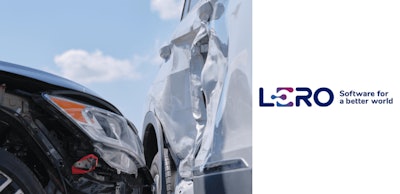
Toronto, Ontario — In this weekly electric and autonomous vehicle report, a new study from researchers at Lero indicates that electric vehicle (EV) drivers are more likely to be involved in at-fault road traffic accidents than internal combustion engine (ICE) vehicles; while GM’s Cruise will reportedly pay a US$1.5 million penalty after failing to fully report a pedestrian collision.
Electric faults
Drivers of electric vehicles are more likely to be involved in at-fault road traffic accidents than drivers of gas and diesel cars, a study by researchers at Lero, the Research Ireland Centre for Software and the University of Limerick reveals.
As noted by the company, in a paper set to be published in November in the journal Accident Analysis and Prevention, the Lero researchers analyzed insurance claims and data from onboard sensors to reveal that electric and hybrid drivers exhibit different behaviours than drivers of traditional vehicles.
Specifically, the study indicates that alongside recording more at-fault claims than traditional vehicles, electric vehicles are also 6.7 percent more expensive to repair than traditional vehicles.
The study further comments that “research finds that despite their lower average mileage than internal combustion engines, lower road exposure for EV drivers does not reduce their risk of experiencing an at-fault insurance claim. When analyzing at-fault claims, we find a four percent increase in crashes from EVs and a six percent increase for hybrid vehicles compared to ICEs.”
“However,” the study continues, “when tested with statistical models, hybrids do not display any further concerns of increased at-fault claim risk. These results indicate that EVs have a higher risk profile than traditional combustion vehicles.”
The study looked at telematic data from 125 million commercial fleet vehicle trips involving 14,642 vehicles recorded from January 2022 to October 2022 in the Netherlands. It also used insurance claims data set during the same period.
For more information, click here.
Penalty procedures
As noted by the National Highway Traffic Safety Administration (NHTSA), General Motors’ Cruise autonomous vehicle division will reportedly pay a US$1.5 million penalty after the company failed to fully report a crash involving a pedestrian.
Moreover, as indicated by CTV News, the crash in question occurred on October 2, 2023, in which Cruise suspended driverless operations across the United States.
However, last Monday, the NHTSA stated that as part of a consent order, Cruise will also have to submit a corrective action plan on how it will improve its compliance with the standing general order, which is for crashes involving automated driving systems, said CTV News.
NHTSA Deputy Administrator Sophie Shulman further commented that “it is vitally important for companies developing automated driving systems to prioritize safety and transparency from the start. The NHTSA is using its enforcement authority to ensure operators and manufacturers comply with all legal obligations and work to protect all road users.”
CTV News further reported that Steve Kenner, chief safety officer, Cruise, further reported in a prepared statement that “our agreement with the NHTSA is a step forward in a new chapter for Cruise, building on our progress under new leadership, improved processes and culture, and a firm commitment to greater transparency with our regulators. We look forward to continued close collaboration with NHTSA as our operations progress in service of our charred goal of improving road safety.”
CTV News concluded that the GM division will meet quarterly with the NHTSA to talk about the state of its operations and to review the periodic reporting and progress on the requirements of the consent order. Cruise will also submit a final report detailing its compliance with the consent order and state of operations 90 days before the end of the base term.
























